
|
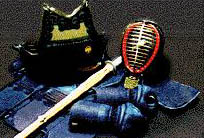
This page contains history of the very beginnings
of the people known as the DONGYI, of which Koreans are a major
part of. The DONGYI include other peoples of East Asia: Jurchens
(Manchus), Mongols, Khitans, Xiongnu (Huns), and so on. The older
period takes up the bulk of nationalist historiography, whereas
the "officially recognized history" dreadfully lacks information
on the said period.
|

7193 BC Han-In (Lord of Heaven), establishes a
country 50,000-li north to south and 20,000-li east to west, called
Han-guk. It comprises of twelve nations. This is believed to be
a tribal league in the nationalist circles, the formation of the
ethnic entity: DONGYI. |

7193 BC - 3898 BC Han-guk is ruled by seven in
succession by seven Han-In's (Han-In is probably a title of a ruler,
rather than a personal name) |
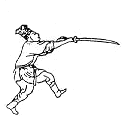
3898 BC establishment of Bak-dal Nara, the first
Dongyi state. Its territories are as follows: (farthest extent in
each direction)
 |

North - Lake Baykal vicinity. Stanovoy mountains
South- Yangzi river (includes present Jiangsu, Shanghai, and Anhui)
East - Russian Maritime provinces
West - Dunhuang |

3898 BC-3804 BC Reign of first Han-ung (a title,
not a name), Kuh-bal-han
3804 BC-3718 BC Reign of second Han-ung, Kuh-bul-li
3718 BC-3619 BC Reign of third Han-ung, U-ya-go
3619 BC-3512 BC Reign of fourth Han-ung, Mo-sa-ra |
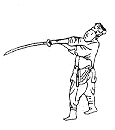
3528 BC The son of crown prince Tae-u-ui, Tae-ho, annexes territory
held by Hua (ancestors of the Han Chinese) chieftain Zhuiren. He
introduces animal husbandry and agriculture to the annexed area,
also devising the Eight Trigrams. In Chinese history, Taeho is known
as Fuxi, or Ox Tamer
|

3512 BC-3419 BC Reign of fifth Han-ung, Tae-u-ui
3419 BC-3321 BC Reign of sixth Han-ung, Da-ui-bal
3321 BC-3240 BC Reign of seventh Han-ung, Kuh-ryon
3240 BC-3167 BC Reign of eighth Han-ung, An-bu-ryon
 |

3168 BC Han-ung An-bu-ryon orders General So-jeon
(Shao dian) to lead troops to administer the former annexed territories.
His son, Shin-nong, introduces medicine and advanced agriculture
to the area. Shin-nong is known in Chinese history as Shen-nong,
or Divine Farmer
|
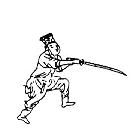
3167 BC-3071 BC Reign of ninth Han-ung, Yang-un
|
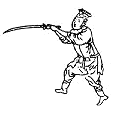
3071 BC-2971 BC Reign of tenth Han-ung, Gal-go
During his reign: descendents of Shin-nong earns right of self-rule
within the annexed territories. First formal border established
with Bakdal Nara
|
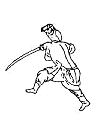
2971 BC-2879 BC Reign of eleventh Han-ung, Kžh-ya-bal
2879 BC-2774 BC Reign of twelfth Han-ung, Ju-mu-shin
2774 BC-2707 BC Reign of thirteenth Han-ung, Sa-wa-ra
 |
 2707 BC-2598 BC
Reign of fourteenth Han-ung, Ja-o-ji 2707 BC-2598 BC
Reign of fourteenth Han-ung, Ja-o-ji
During his reign: Begins mass production of steel and bronze weapons
such as swords, spears, armor, helmet, arrow tips, etc. When Yumang
(Yuwang), descendent of Shin-nong, tries to reach the coast by military
means, the Han-ung's army crushes them and occupies their capital,
Gongsang (Kongsang, in present Shandong). Then the native chieftain
Heon-won (Xuanyuan, the Yellow Emperor) issues challenge, whom the
Han-ung defeats is 73 successive battles, and makes him a vassal.
Heonwon is given the title Yellow Emperor (Huangdi) by the Han-ung,
who is also known as Chi-u (Ciyou)
|

2598 BC-2509 BC Reign of fifteenth Han-ung, Chi-aek-teuk
2509 BC-2453 BC Reign of sixteenth Han-ung, Chuk-da-ri
2453 BC-2381 BC Reign of seventeenth Han-ung, Hyuk-da-sae
|

2381 BC-2333 BC reign of eighteenth Han-ung, Kuh-bul-dan.
he is the father of the first Tangun, Im-gom

|













 2707 BC-2598 BC
Reign of fourteenth Han-ung, Ja-o-ji
2707 BC-2598 BC
Reign of fourteenth Han-ung, Ja-o-ji 
